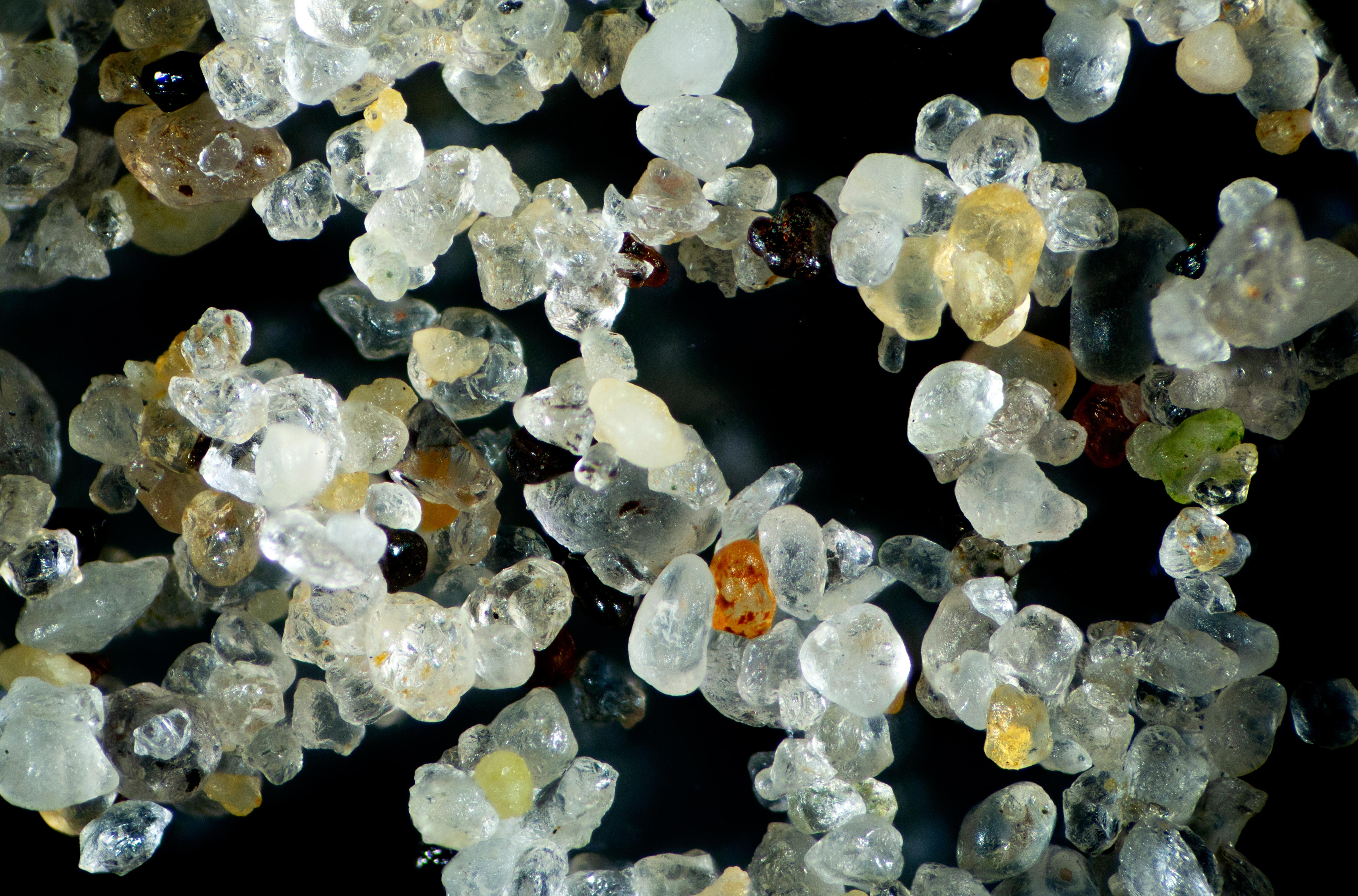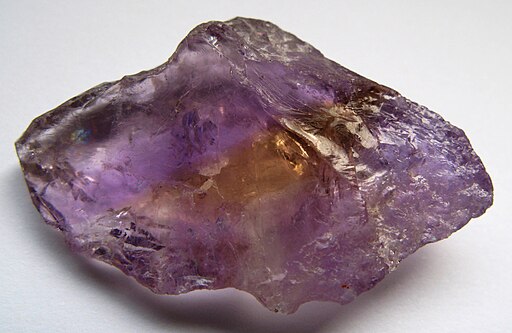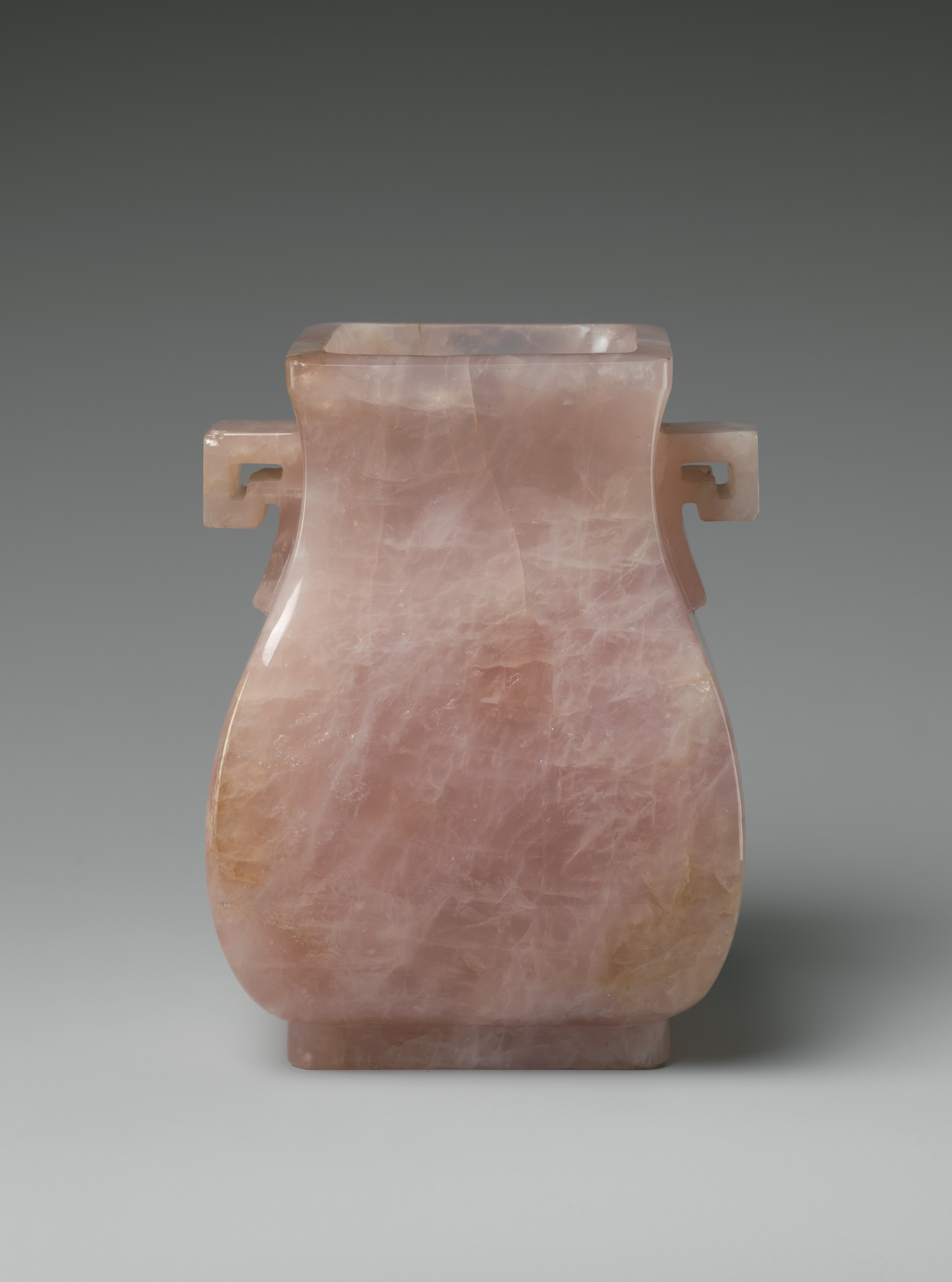Quartz is one of the world’s most abundant materials – and one of humanity’s oldest fascinations. From ancient myths to modern science, quartz has played a part in pretty much every aspect of human development – and it’s pretty to boot.
But have you ever wondered what’s going on behind the twinkling gem at the end of your necklace? Come with us on a journey through geology, chemistry, electronics – and just a little bit of parrotfish poop.
The gemstone that’s everywhere
For a rock that’s so ubiquitous in jewelry, you might be surprised by how rare quartz really isn’t. Being made almost entirely of oxygen and silicon – the two most abundant elements on Earth by mass – finding the ingredients to form the mineral is a cinch.
What’s perhaps trickier is creating the right environment for it. “Most quartz forms in either igneous rocks or environments with geothermal waters,” explained Addison Rice, geologist, environmental engineer, and PhD student in paleoceanography and geosciences at Utrecht University, in an article for the International Gem Society.
“In igneous rocks, quartz forms as magma cools. Like water turning into ice, silicon dioxide will crystallize as it cools. Slow cooling generally allows the crystals to grow larger,” she continued. “Quartz that grows from silica-rich water forms in a similar way. Silicon dioxide dissolves in water, like sugar in tea, but only at high temperature and pressure. Then, when the temperature or pressure drops, the solution becomes saturated, so quartz crystals form.”
Luckily, if there’s two things the Earth has a lot of, it’s water and magma. The result, therefore, is a crust to the planet which is about one-eighth quartz: billions and billions of silicon dioxide molecules all built into stacks of tetrahedra to create the sparkling gemstones we know, love, and pay willingly for.
So where is it all?
If 12 percent of the Earth’s continental crust is quartz, you might be wondering why exactly we’re not tripping over lumps of it every day. Well, in fact, we kind of are: beach sand, particularly, is mostly quartz, eroded over eons into the ever-smaller particles under our feet (unless you’re in Hawai’i – the famous white sand there is made of poop).

Close-up photo of sand grains.
Image Credit: Jeff Holcombe/Shutterstock.com
Of course, there’s a chance you’re looking for quartz in bigger lumps than a grain of sand. That’s not a problem: “it is present in many igneous and metamorphic rocks, is a major constituent of granite pegmatites, and a chief component of sandstones,” explained Craig R Glenn, a professor of Earth Science in the Department of Geology and Geophysics at the University of Hawai’i.
Rock crystal quartz can be found pretty much around the globe, he wrote, with especially notable formations in the Alps, Southeastern Brazil, Madagascar, and Japan. In the US, it’s best to look to Hot Springs, Arkansas or Little Falls and Ellenville, New York, he advised.
If you want some particular type of quartz, however – smokey, or colored some rainbow hue – you might need to look elsewhere. And that’s because…
Where do the colors of quartz come from?
Basic quartz has a simple recipe: silicon and oxygen. Composed of just these two elements, it forms a simple see-through quartz so clear that it’s easy to see why the Ancient Greeks confused it for water.
They “assumed quartz crystals were ice frozen so hard it wouldn’t melt,” explains the Smithsonian National Museum of History on their website. “They called the crystals ‘krystallos,’ their word for ice and the origin of our word crystal. Quartz crystals really were the original ‘crystals.’”
But add in even a trace amount of some other element, and a variety of vivid colors can be produced. Amethyst, for example – which you might not realize counts as quartz, but definitely does – owes its purple hue to the presence of iron, irradiated by gamma rays from the rock surrounding the gem. Heat that stone to above 440°C (825°F), however, and you’ll create a sunny yellow citrine.

You can even find quartz which has solidified halfway through the process. Half amethyst, half citrine, the result is known as ametrine.
Some quartzes are not so discerning: strawberry quartz looks the way it does because of large particles of hematite, or lepidolite, or muscovite, or piemontite, or pretty much anything else that finds its way into the rock and looks enough like strawberry seeds. Some are so particular that it took millennia for us to decipher what was going on: rose quartz has been used in jewelry since at least 7000 BCE, but it was only at the turn of the 21st century that various spectrometry methods revealed what gives the rock its rosy hue.
The culprit? A mineral none of the researchers had seen before, but which was similar to a very rare aluminum borate silicate mineral named dumortierite. It’s currently nicknamed dididumortierite.
Chalcedony
While most of the quartzes we’ve seen so far wouldn’t look out of place on an engagement ring or a pendant, there’s another whole branch of the mineral’s family tree that, at first glance, may not strike you as precious at all.
“Some quartz varieties, such as amethyst, citrine, and rose quartz, are cut from single crystals, but more are polycrystalline. This means that a stone is composed of many interlocking crystals,” explains gemologist Pat Daly in an article for Gem-A, the Gemmological Society of Great Britain.
“Chalcedony is a quartz gem composed of very small crystals which cannot be distinguished with a loupe or a standard gemmological microscope,” Daly writes.
The result is a rock that doesn’t look gem-like at all – things like the opaque nickel-green of chrysoprase, or the earthy chaos of jasper and bloodstone. One of the most recognizable forms of chalcedony is agate: it “occurs as nodules, often in spaces which were once bubbles in volcanic rocks,” Daly explains, which gives it its near-omnipresent banding patterns.
.jpg)
A piece of agate held in the Muséum de Nantes, showing the rock’s trademark ribboning pattern.
“It grows inwards from the walls of the cavities as fibrous crystals of quartz,” Daly writes. “The fibres radiate out from nucleation points, forming a series of domes which compete for space as they grow. Structural banding, parallel with the advancing growth surfaces, is always present even if color banding is absent.”
The power of quartz
Humans have always loved shiny things, and quartz was never an exception. “People in the earliest recorded times believed in the magical powers of quartz,” notes the Gemological Institute of America. “Ancient Roman, Egyptian, and Greek civilizations used quartz crystals as potent talismans.”
Quartz turns up in mythologies and traditions as wide-ranging as the Aborigines of Australia and the prehistoric peoples of Ireland; “the Romans used rose quartz as a seal to signify ownership,” the Institute explains, “and Egyptians believed the stone could prevent aging.”

A rose quartz vase from Qing Dynasty China, 18th century
But what may surprise you is that all these groups’ beliefs in the power held within quartz crystals – well, they weren’t exactly wrong, if you take the term “power” literally.
We’re not about to start talking about centering your chakras or finding your birth stones here – but it’s definitely true that quartz can make a particular type of energy. Specifically, it’s electrical energy: give the stone a squeeze – or to use more scientific terminology, subject it to mechanical stress – and you can make a small electrical charge move through it.
It’s called piezoelectricity – the name comes from the Greek “piezein”, or “squeeze” – and it was originally discovered all the way back in 1880, by a (pre-Marie-era) Pierre Curie and his brother Jacques.
People had known there was something fishy going on if you smushed quartz before that, but nobody had been able to prove it – and indeed, even after the brothers confirmed and named the phenomenon, it turned out to be so complex that no real headway was made for decades.
Today, though, it’s one of the many properties that makes quartz so indispensable to the modern world. Without quartz and its piezoelectric properties, we wouldn’t have sonar or most modern watches and clocks; it’s used in transmitting radio and TV signals; it’s even in your computer and your GPS.
All of which is, we think you’ll agree, much more interesting and impressive than sticking it up your hoo-ha.
All “explainer” articles are confirmed by fact checkers to be correct at time of publishing. Text, images, and links may be edited, removed, or added to at a later date to keep information current.
Source Link: Unlocking The Mysteries Of Quartz, From Ancient To Modern Times